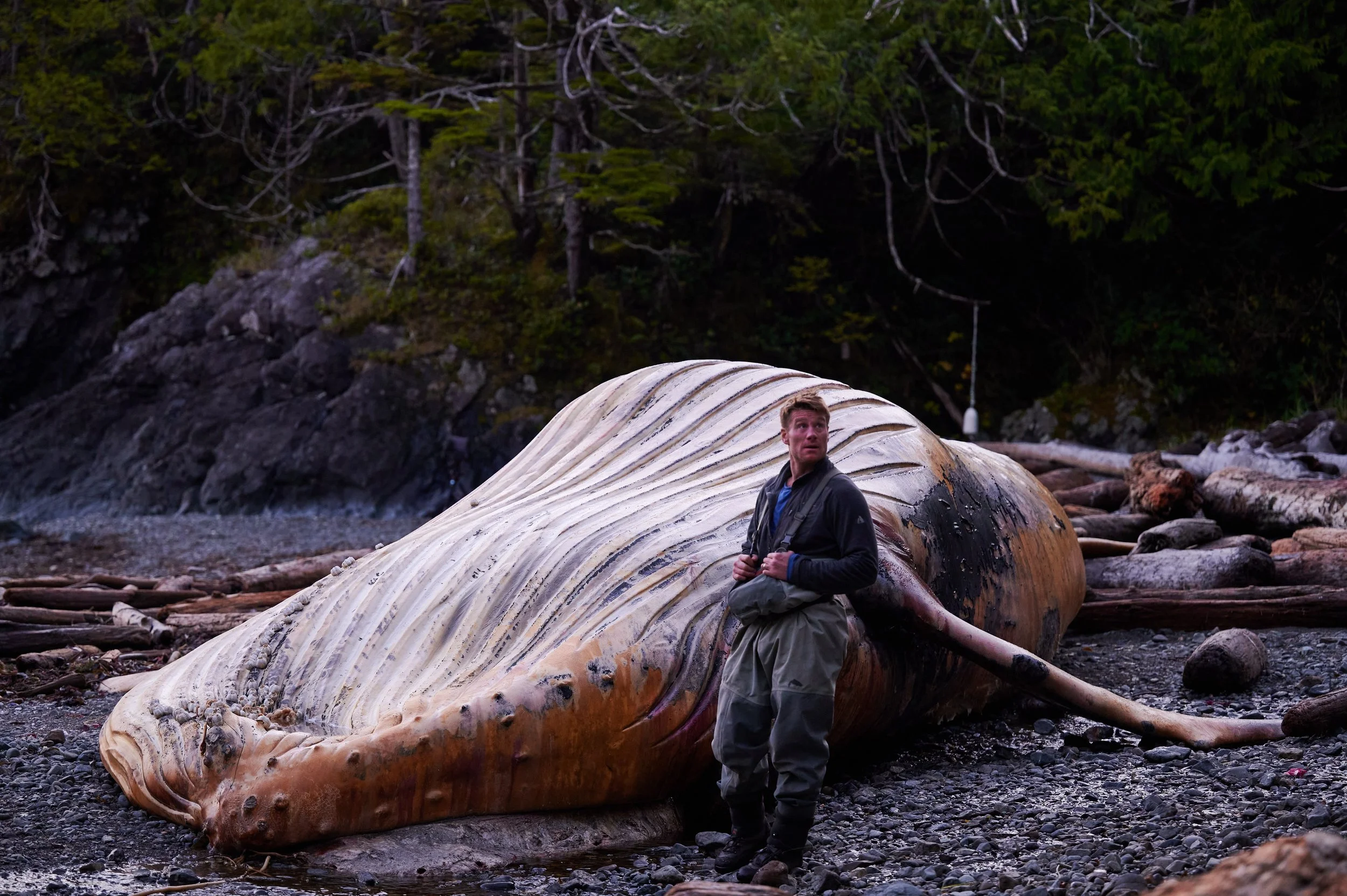 Have you ever listened to someone so intently that you momentarily loose control of your motor functions and end up drooling in a pile on your own lap? It takes a special kind of conversation to evoke such levels of concentration. In order to be drawn into someone's words in this fashion, they almost certainly need to be discussing a topic that you are passionate about.
Have you ever listened to someone so intently that you momentarily loose control of your motor functions and end up drooling in a pile on your own lap? It takes a special kind of conversation to evoke such levels of concentration. In order to be drawn into someone's words in this fashion, they almost certainly need to be discussing a topic that you are passionate about.
Being an avid fisherman, it was with this type of focus that I used to listen to my Opa reminisce about fishing for Pacific Salmon on the Sunshine Coast back in the 1960’s and 1970’s; a time when it wasn’t a question of whether or not you would catch a fish in a day but how long it would take you to fill the boat. Nowadays, you would be considered lucky if you could get a bite.
The 60’s and 70’s where a time of abundance, when natures bounty couldn’t have been more ready for the taking. Logging and fishing where in business and business was booming. With so many fish and so many trees, the general focus was not on environmental conservation but instead on exploitation. These were the resources that drew in the community of the Sunshine Coast and almost every other coastal community for that matter. It was an exciting time to be alive, so much opportunity. Needless to say our environment has a way of bringing people together and a happy healthy environment equals happy healthy people.
With all these communities popping up all over B.C.’s rugged coastline, the need for power also came into focus. What better way to power a coastal community than by hydro power? Currently this is what hydro-power companies are selling as “green power” in large quantities to our friendly neighbours in the South.
The government is able to sell hydro-power as “green power” based on the general assumption that it produces no carbon emissions in it’s generation of power. Before we accept this general assumption, however, it would be wise the ask the question: what exactly is “green power?” Should it not be power that is generated with no negative environmental impact? In my opinion this would be a fairly suitable definition for the term. Now lets take another look at hydro-power. Every watershed in B.C. is currently being severely altered in order to accommodate the B.C. Liberals “run of the rivers” projects. Although once implemented, these facilities don’t huff out massive smoke stacks of CO2, they certainly do in the construction phase. Not to mention the ecosystems that are completely destroyed in the process?
In 1952 B.C. Hydro built a hydro dam at the head of Clowhom lake up Sechelt inlet. In 1958, another much larger dam was constructed. I have heard rumors of large healthy populations of pacific salmon traveling to and from this watershed, prior to the construction of the dam. In addition to salmon, there are more recent reports of sea run cutthroat and steelhead trout utilizing this passageway between the pacific ocean and the fresh water spawning channels. Today there is not a single fish that travels from our ocean into this fresh water ecosystem. The reason for this, we believe, is strictly due to the fact that they have no means of doing so. When the dam was constructed in 1958, as mentioned earlier, the general focus was not on conservation but instead on exploitation. B.C. Hydro could have built a fish ladder or a side channel or even better, they could have turned this beautiful healthy functioning ecosystem into a provincial park. However, the past is the past and all we can do is learn from it, take the present and use it to shape a desired future. Which is exactly what we plan on doing.
There is a tremendous value in fish and lumber from an economic standpoint but there is an even larger value from an environmental standpoint. Salmon are a keystone species in West Coast ecosystems and trees provide us with oxygen which we need to breath, how much more valuable can something get? Unfortunately, economics has been standing on top of environment for far too long. Now it is time to bring our environment back into the limelight because when our “resources” are gone, they are gone from both an environmental perspective as well as an economic perspective.
I have recently attended a meeting hosted by B.C. Hydro and the B.C. Hydro funded FWCP (Fish and Wildlife Compensation Program). The FWCP was implemented to address watersheds severely affected by Hydro facilities. They do this by offering grants to organizations willing to implement some sort of restoration effort. The watersheds that are currently on the table for discussion are: Jordan River, Wahleach, Falls River, Clayton Falls and The Sunshine Coast’s Clowhom Lake. The meeting was hosted at Rockwood Centre in Sechelt on January 31st, 2011. I attended the meeting as a concerned citizen and on behalf of TENUK-an environmental non-profit organization dedicated to restoring the health of our environment through environmental awareness, restoration and rehabilitation projects. Also in attendance were two other representatives from TENUK; one representative from the Sechelt First Nations Band; three other concerned citizens; and one environmentally dedicated local business owner. The meeting discussed the state of the ecosystem, present day, and what could be done to restore it to a healthy state. A large topic of discussion was the populations of a variety of different species of fish. Members of TENUK were pushing for implementing a fish ladder or side channel in an effort to restore salmon to this watershed. This project received support from everyone at the meeting and the initial steps for restoration are currently being carried out. The first step involves getting all the the different interest groups on the same page, pooling all of the valuable skills, knowledge and resources. This is one of many environmental restoration projects that TENUK hopes to be a part of in the near future. In order for these projects to be successful the communities will need to come together in an effort to restore the health of our coastal environments. These coastal environments have given our communities everything in the past, now it is time for us to give back because a happy healthy environment equals happy healthy people.
Quinn Barabash,
Concerned Citizen and Founder and Chairman of TENUK
For more information and to get involved please visit our environmental Non-profit organization at
www.tenuk.org
To be honest, I was weary of telling the world wide web about this tasty treat, however, yesterday, when I went collecting nettles, I realized that there are enough nettles for the whole WORLD! And when I say 'nettles', I mean stinging nettles! The same stinging nettles that gave you a nasty uncomfortable rash when you were a kid. Who knew you could eat them?
Nettles are a very rich source of iron, calcium, potassium, magnesium and vitamins A, C and D. The medicinal properties are endless! Everything from cleansing the liver and kidney to stimulating the immune system to treating inflammation of the prostate! Look for them in moist, rich soils along deer trails, meadows and man-made structures like barns or roadsides. The best time to harvest is early spring, when the tender green shoots are the most nutritious. Make sure to wear gloves and use scissors or a knife for a clean cut so you don't damage any root systems by pulling on the plant.
There are a couple of ways to eat and/or preserve nettles. To eat fresh, make sure to steam or pour boiling water on the nettles so they can release their stingers. After that, you can use them as you would spinach. Reserve the water that you used to cook the nettle and use it as a base for a soup or a nourishing tea. If you picked too many, you can preserve by drying the nettles above a wood stove or in the sun. Dried nettles are also good in soups and tea.
If you want really, really fresh nettles, you can travel to Dorset, England and enter the World Nettle Eating Championships. Competitors attend from all over the world to eat fresh stinging nettle! I wouldn't have recommended it, but after looking at the website, it looks kind of fun? Check it out, and good luck!

